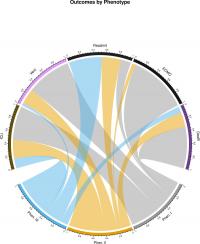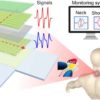In a new study, researchers identify three clinical COVID-19 phenotypes, reflecting patient populations with different comorbidities, complications and clinical outcomes. The three phenotypes are described in a paper published this week in the open-access journal PLOS ONE 1st authors Elizabeth Lusczek and Nicholas Ingraham of University of Minnesota Medical School, US, and colleagues.
COVID-19 has infected more than 18 million people and led to more than 700,000 deaths around the world. Emergency department presentation varies widely, suggesting that distinct clinical phenotypes exist and, importantly, that these distinct phenotypic presentations may respond differently to treatment.
In the new study, researchers analyzed electronic health records (EHRs) from 14 hospitals in the midwestern United States and from 60 primary care clinics in the state of Minnesota. Data were available for 7,538 patients with PCR-confirmed COVID-19 between March 7 and August 25, 2020; 1,022 of these patients required hospital admission and were included in the study. Data on each patient included comorbidities, medications, lab values, clinic visits, hospital admission information, and patient demographics.
Most patients included in the study (613 patients, or 60 percent) presented with what the researchers dubbed “phenotype II.” 236 patients (23.1 percent) presented with “phenotype I,” or the “Adverse phenotype,” which was associated with the worst clinical outcomes; these patients had the highest level of hematologic, renal and cardiac comorbidities (all phospital readmission compared to the other phenotypes. Overall, phenotypes I and II were associated with 7.30-fold (95% CI 3.11-17.17, p
The authors conclude that phenotype-specific medical care could improve COVID-19 outcomes, and suggest that future research is needed to determine the utility of these findings in clinical practice.
The authors add: “Patients do not suffer from COVID-19 in a uniform matter. By identifying similarly affected groups, we not only improve our understanding of the disease process, but this enables us to precisely target future interventions to the highest risk patients.”
Follow the latest news on the coronavirus (COVID-19) outbreak
More information:
Elizabeth R. Lusczek et al, Characterizing COVID-19 clinical phenotypes and associated comorbidities and complication profiles, PLOS ONE (2021). DOI: 10.1371/journal.pone.0248956
Provided by
Public Library of Science
Citation:
COVID-19 patients can be categorized into three groups (2021, April 2)
retrieved 3 April 2021
from https://medicalxpress.com/news/2021-04-covid-patients-categorized-groups.html
This document is subject to copyright. Apart from any fair dealing for the purpose of private study or research, no
part may be reproduced without the written permission. The content is provided for information purposes only.



